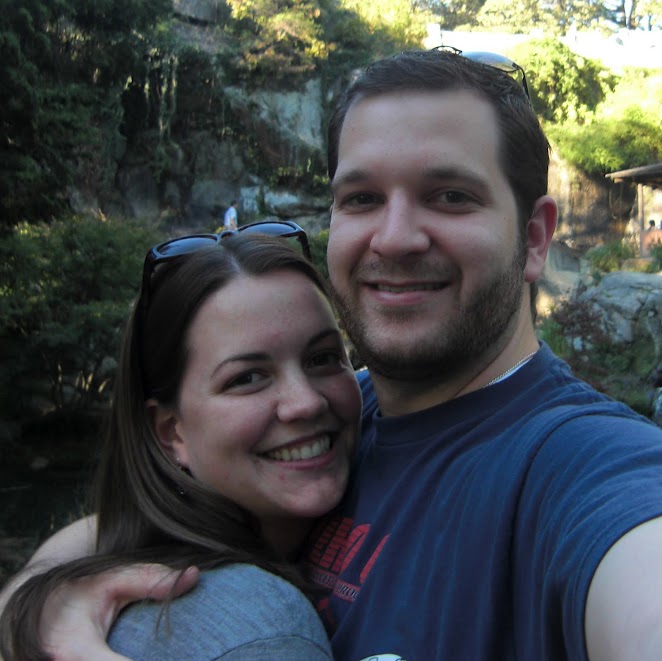Our final chamber test involved experiencing rapid decompression. Imagine for a moment you are flying on an airplane at 15000 feet (lower than most commercial planes actually fly). Since it's imaginary, I'd recommend avoiding Jet Blue. Perhaps imagine British Airways, I hear they're nice. The cabin is pressurized to a comfortable 500 feet. Suddenly, there are snakes everywhere... I mean... suddenly someone opens a window because they're an idiot (never mind asking who built a plane with windows that open - I'm sure it wasn't an American company) and cabin pressurization is instantly lost. Essentially that's what happened; except that since we were on the ground, they achieved this by pressurizing two different chambers at the altitudes mentioned above and unexpectedly blowing the door in between the chambers.
A couple fun facts regarding rapid decompression:
A couple fun facts regarding rapid decompression:
- Everything that I've previously described for higher altitudes occurs just the same... just... rapidly. (for example, it gets super cold super quick)
- Due to the sudden drop in temperature, the water in the air condenses into a fog cloud in the room, which then rushes out in a gust of air.
- After the initial gust of equilibration, there is no continual sucking. Movies that show people clinging for dear life are inaccurate.
- Rapid decompression cuts your TUC in half. Therefore - if you're flying at 35K feet and experience this - you've got about 15 seconds before you're an idiot (if you aren't one already). Good luck with that.
Good times. It was also at this point in the training we learned the term gangload. It seems that in such a scenario, you want to gangload your regulator before putting on your oxygen mask. To make things simple for ya'll - gangload means "flip all three switches up". Another moment in which I found humor and the air force guys found none.
Having reached the end of the chamber portion of my tale, enjoy this really old school video of some hypoxia demonstrations and rapid decompressions. Although this is an ancient clip, it isn't entirely dissimilar to what we experienced...
The 2nd day of our training was much shorter and spent entirely in the classroom. We got to learn some interesting things regarding night vision, but my favorite section was on G-LOC. G-LOC stands for gravitational loss of consciousness. Essentially it means that a pilot is pulling so many Gs that all the blood rushes to his feet and he blacks out. Here again we got to see a video montage of fighter pilots in a centrifuge G-LOCing. The weird part is the recovery. You can almost see the blood return to their upper body, extremities, and head. And they always feel just fine after. Still, there are ways to combat G-LOC including the G-strain maneuver. Basically it involves a lot of muscle tension and unnatural breathing to resist your blood's exodus to your feet. We saw videos of pilots using such techniques to pull up to 9 Gs for 30 seconds at a time. Wild, wild stuff.
Here's another old school clip of what I mean. Be sure to check out the second guy. He gets up to 9 Gs and carries on a conversation at the same time.
Well, that about wraps things up. As you can tell, it was a full 2 days. Hopefully, more adventure posts will be coming soon. This Wednesday night I'll be doing a sleep study - so maybe I can post my brain wave patterns or something. And in 2 weeks, we're scheduled to take a ride on the Vomit Comet. In the meantime, what say we get back to talking about cinnamon rolls.
Having reached the end of the chamber portion of my tale, enjoy this really old school video of some hypoxia demonstrations and rapid decompressions. Although this is an ancient clip, it isn't entirely dissimilar to what we experienced...
The 2nd day of our training was much shorter and spent entirely in the classroom. We got to learn some interesting things regarding night vision, but my favorite section was on G-LOC. G-LOC stands for gravitational loss of consciousness. Essentially it means that a pilot is pulling so many Gs that all the blood rushes to his feet and he blacks out. Here again we got to see a video montage of fighter pilots in a centrifuge G-LOCing. The weird part is the recovery. You can almost see the blood return to their upper body, extremities, and head. And they always feel just fine after. Still, there are ways to combat G-LOC including the G-strain maneuver. Basically it involves a lot of muscle tension and unnatural breathing to resist your blood's exodus to your feet. We saw videos of pilots using such techniques to pull up to 9 Gs for 30 seconds at a time. Wild, wild stuff.
Here's another old school clip of what I mean. Be sure to check out the second guy. He gets up to 9 Gs and carries on a conversation at the same time.
Well, that about wraps things up. As you can tell, it was a full 2 days. Hopefully, more adventure posts will be coming soon. This Wednesday night I'll be doing a sleep study - so maybe I can post my brain wave patterns or something. And in 2 weeks, we're scheduled to take a ride on the Vomit Comet. In the meantime, what say we get back to talking about cinnamon rolls.

1 comment:
The unnatural breathing thing was weird. I'd like to have you seen you doing it=)
Also, I like JetBlue far more than other airlines...
Post a Comment